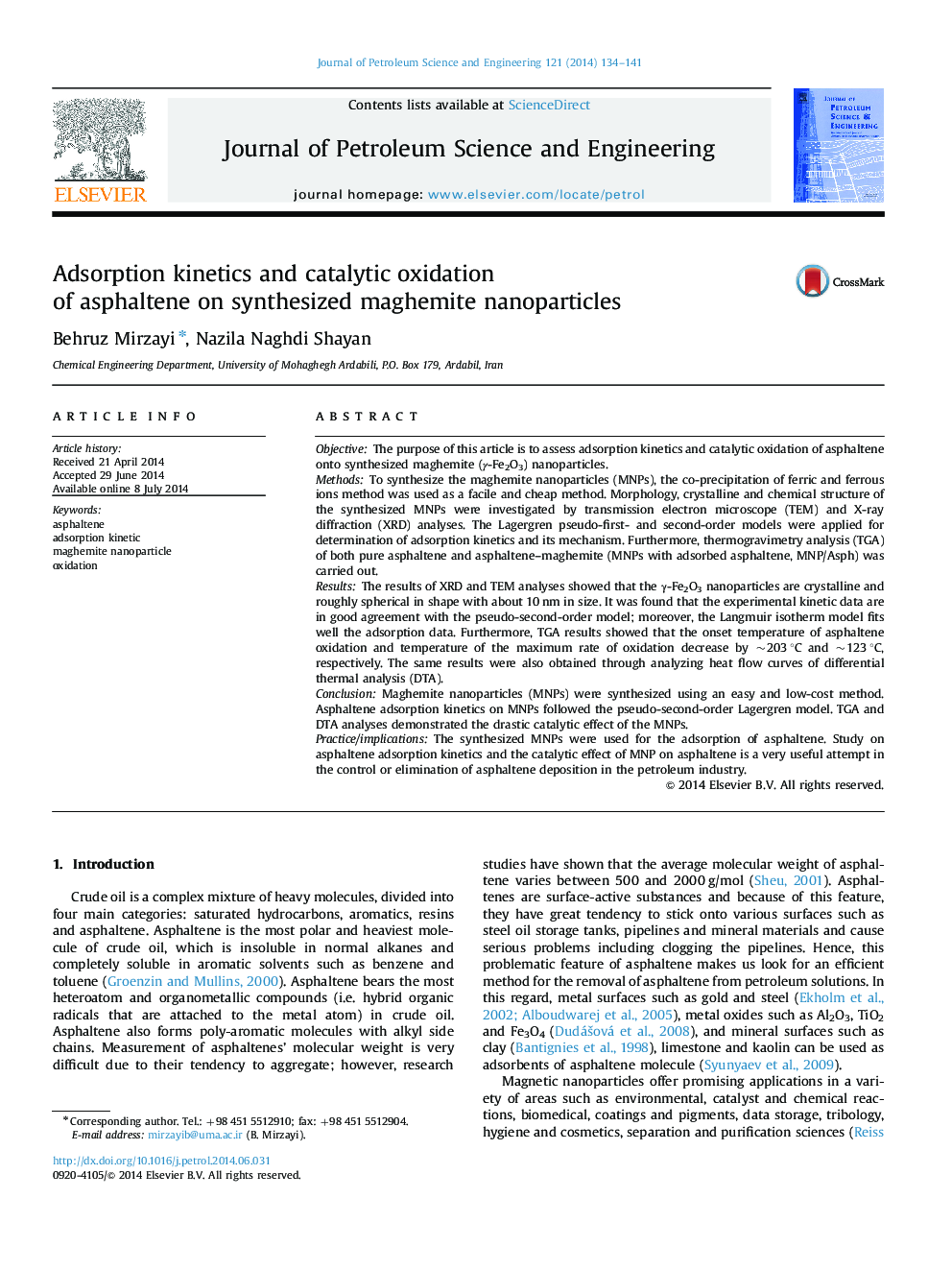| Article ID | Journal | Published Year | Pages | File Type |
|---|---|---|---|---|
| 1755064 | Journal of Petroleum Science and Engineering | 2014 | 8 Pages |
•Maghemite nanoparticles were synthesized using a facile and cheap method.•The synthesized maghemite nanoparticles were used to adsorb asphaltene.•Adsorption kinetics and isotherm of asphaltene were studied.•The results were analyzed using TEM, XRD, TGA and DTA analyses.•Catalytic effect of maghemite on asphaltene oxidation was demonstrated.
ObjectiveThe purpose of this article is to assess adsorption kinetics and catalytic oxidation of asphaltene onto synthesized maghemite (γ-Fe2O3) nanoparticles.MethodsTo synthesize the maghemite nanoparticles (MNPs), the co-precipitation of ferric and ferrous ions method was used as a facile and cheap method. Morphology, crystalline and chemical structure of the synthesized MNPs were investigated by transmission electron microscope (TEM) and X-ray diffraction (XRD) analyses. The Lagergren pseudo-first- and second-order models were applied for determination of adsorption kinetics and its mechanism. Furthermore, thermogravimetry analysis (TGA) of both pure asphaltene and asphaltene–maghemite (MNPs with adsorbed asphaltene, MNP/Asph) was carried out.ResultsThe results of XRD and TEM analyses showed that the γ-Fe2O3 nanoparticles are crystalline and roughly spherical in shape with about 10 nm in size. It was found that the experimental kinetic data are in good agreement with the pseudo-second-order model; moreover, the Langmuir isotherm model fits well the adsorption data. Furthermore, TGA results showed that the onset temperature of asphaltene oxidation and temperature of the maximum rate of oxidation decrease by ~203 °C and ~123 °C, respectively. The same results were also obtained through analyzing heat flow curves of differential thermal analysis (DTA).ConclusionMaghemite nanoparticles (MNPs) were synthesized using an easy and low-cost method. Asphaltene adsorption kinetics on MNPs followed the pseudo-second-order Lagergren model. TGA and DTA analyses demonstrated the drastic catalytic effect of the MNPs.Practice/implicationsThe synthesized MNPs were used for the adsorption of asphaltene. Study on asphaltene adsorption kinetics and the catalytic effect of MNP on asphaltene is a very useful attempt in the control or elimination of asphaltene deposition in the petroleum industry.
Graphical abstractFigure optionsDownload full-size imageDownload as PowerPoint slide
